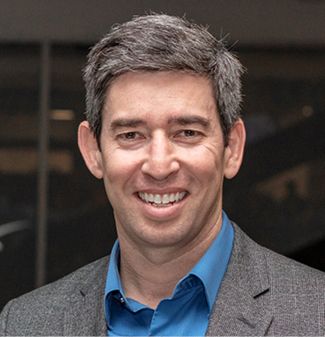
Enabling global connectivity with non-GSO satellite constellations


David Goldman, Vice President, Satellite Policy, SpaceX
With the upcoming World Radiocommunication Conference (WRC‑23), we have a generational opportunity to ensure low-latency connectivity and equitable access to the world’s airwaves for people that need it most by reconsidering decades-old regulations designed for a previous era. This opportunity arises because those living in unserved areas around the globe are on the precipice of a transformation in connectivity, built on the services provided by next-generation satellite networks. Advanced technologies using non‑geostationary-satellite orbit (non‑GSO) constellations are bringing high-quality broadband everywhere, and with key enabling technologies, like SpaceX’s interconnected laser mesh, do so essentially immediately.
Recognizing this potential, several ITU Member State administrations have proposed considering whether updated rules can increase the capability of next-generation satellite systems to serve people without harming users of legacy technologies.
This entails updating the applicable rules encapsulated in the Radio Regulations maintained by the International Telecommunication Union (ITU). One potential option is to simply apply methods already adopted in other spectrum bands to the workhorse Ku and Ka frequencies, which have physical qualities best suited for connecting the unconnected. This can be done, of course, acknowledging that specific cases like geostationary-satellite orbit (GSO) broadcasting services in Ku-band may require protection criteria that are different from those of typical fixed satellite service ones.
The choice is straightforward. If the world’s top radio-frequency engineers cannot find a way to improve the rules after studying the issue, then nothing changes. But if they can come up with a solution, millions of previously unserved people will finally receive the low-latency broadband they need, with no effect on GSO systems.
The only wrong choice is delay, which could prove debilitating for people who remain unserved and need connectivity now. Missing this narrow window for action will deny them next-generation broadband access for a generation, all because of an outdated regulatory regime.
After all, one of ITU’s key pillars is the efficient use of shared spectrum resources. The ITU established this principle for a good reason: efficiency means more and better systems to connect people.
Issues with ITU Radio Regulation Article 22 “EPFD” limits and why they should be revised urgently
Unlike mobile systems, which enjoy access to exclusive spectrum, next-generation low-Earth-orbit systems must share spectrum bands both with each other and with other technologies such as traditional GSO satellites.
To help manage the assortment of technologies that share the same frequencies, ITU has developed a complex array of sharing rules.
For their part, GSO-satellite operators devised a set of rules while non‑GSOs were still hypothetical back in 1997 and 2000. These rules required future non‑GSOs to meet an equivalent power flux density (EPFD). The GSOs essentially said that non‑GSO satellites are required to whisper while distant GSOs can shout. EPFD rules that were adopted are increasingly recognized as over-protective, thus resulting in severe operational constraints, significant capacity reduction and unused spectrum for non‑GSO systems. Today’s next-generation systems include advanced capabilities that can connect countless more people worldwide without causing unacceptable interference to GSOs using the same spectrum.
The EPFD limits set out in ITU Radio Regulation Article 22, therefore, should be revised urgently to bring the promise of high-speed broadband to everyone, no matter their location.
Inefficient EPFD provisions
ITU explored similar rules in the 40/50 gigahertz frequency bands (also known as the “Q/V” bands) during the last World Radiocommunication Conference study cycle from 2015 to 2019.
Just as the organization’s study groups and membership concluded then, the existing EPFD provisions in Ku‑ and Ka‑bands are spectrally inefficient. This inefficiency unnecessarily constrains the ability of non‑GSO systems to meet growing demand from consumers for high-speed, low-latency broadband, without providing any additional protections for legacy GSO satellites.
Fortunately, this study of the Q/V bands can help point the way for the prime Ku/Ka bands. The last conference, WRC‑19, approved a new sharing framework to protect GSO networks in Q/V while allowing non‑GSO systems some needed operational flexibility to meet demand.
We should now study whether we can leverage the same findings for Ku/Ka while ensuring protection criteria for specific legacy services, like satellite broadcasting, which may require ad hoc solutions.
The urgency of EPFD in Ku/Ka bands
Revisiting EPFD in Ku/Ka is even more urgent today given Resolution 219 from the last ITU Plenipotentiary Conference (PP‑22), which instructed study groups in the Radiocommunication Sector (ITU–R) to study equitable access to, and rational and compatible use of, GSO and non‑GSO spectrum resources.
In other words, re-evaluating EPFD would ensure that users that depend on next-generation satellite systems have equitable access to the spectrum.
The WRC‑23 proposal would also require that any studies of how to improve the rules ensure GSO systems will not receive unacceptable interference, driving the best outcome for all users — particularly those in emerging markets that have been denied equitable access to connectivity by outdated rules for too long.
Download your copy of the ITU News Magazine: Satellite connectivity.
Header image credit: SpaceX
